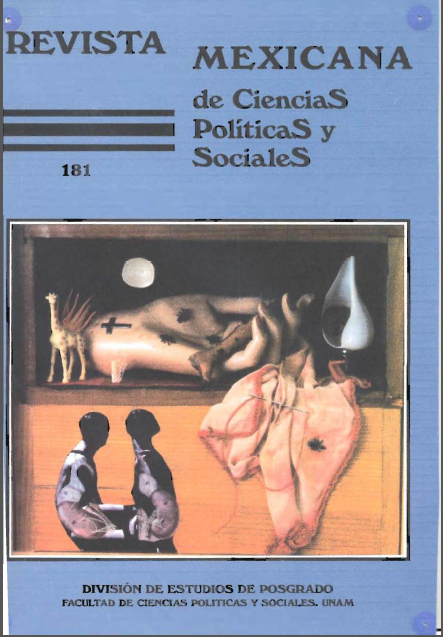La transición demográfica en América Latina. Algunas consideraciones sobre el caso mexicano
Main Article Content
Abstract
La transición demográfica en América Latina. Algunas consideraciones sobre el caso mexicano
Downloads
Article Details
Citas en Dimensions Service
References
ABED, CELADE, IUSSP, PROLAP y SOMEDE, Comunicado a los gobiernos de América Latina y el Caribe. Población y sociedad, IV Conferencia de Población. La transición demográfica en América Latina y El Caribe, Ciudad de México, abril de 1993.
CEPAL-CELADE-BID, Impacto de las tendencias demográficas sobre los sectores sociales en América Latina (contribución al diseño de políticas y programas), Santiago de Chile, 1996.
Lassonde, Louise, Los desafíos de la demografía ¿qué calidad de vida habrá en el siglo xxi?, traducción de Mónica Mansour, UNAM- FCE, México, 1997.
Miró G., Carmen A., Población, crisis y perspectivas demográficas en América Latina, ponencia presentada el 16 de febrero de 1998 en el Centro Regional de Investigaciones Multidisciplinarias, UNAM.
Naciones Unidas, Crecimiento, estructura y distribución de la población (informe conciso), Nueva York, 2000.
Naciones Unidas, World Population Prospects. The 1998 Revisión, vol. I, Comprehensives Tables.
Partida, Virgilio y Tuirán Rodolfo, Evolución futura de la población mexicana: envejecimiento y bono demográfico, ponencia presentada en el seminario “Del siglo XXI al tercer milenio. Población y sociedad en el México del siglo XXI”, México, 13-14 de octubre de 1999.
Sen, Amartya, “La salud en el desarrollo”, en Informando y reformando, boletín trimestral del NAADIIR/al, núm. 5, México, julio- septiembre, 2000.
Tolkman, Víctor E. y O’Donnell, Guillermo, Pobreza y desigualdad en América Latina. Temas y nuevos desafíos, Piadós, Buenos Aires, 1999.

La Revista Mexicana de Ciencias Políticas y Sociales publicada por la Universidad Nacional Autónoma de México se distribuye bajo una Licencia Creative Commons Atribución-NoComercial-SinDerivar 4.0 Internacional.
Basada en una obra en http://www.revistas.unam.mx/index.php/rmcpys/
La RMCPyS autoriza a sus colaboradores que suban una copia de sus trabajos publicados en sus webs personales o en cualquier repositorio de acceso abierto, siempre y cuando se mencione específicamente a la Revista Mexicana de Ciencias Políticas y Sociales como fuente original de procedencia, citando el año y número del ejemplar respectivo y añadiendo el enlace a la página web donde este órgano editorial puede ser consultado in toto, de manera abierta y gratuita en: <www.revistas.unam.mx/index.php/rmcpys>.
Las y los lectores tienen libertad para:
Compartir, copiar y redistribuir el material en cualquier medio o formato.
El licenciante no puede revocar estas libertades en tanto usted siga los términos de la licencia.
De acuerdo con los siguientes términos:
- Atribución: la/el lector/a debe reconocer el crédito de una obra de manera adecuada, proporcionar un enlace a la licencia, e indicar si se han realizado cambios. Puede hacerlo en cualquier forma razonable, pero no de forma tal que sugiera que tiene el apoyo del licenciante o lo recibe por el uso que hace.
- No comercial: la/el lector/a no puede hacer uso del material con fines comerciales.
- Si se mezcla, transforma o se desarrolla a partir de la obra licenciada, no se permite la distribución del material modificado.
Cargos por gestión de artículos
La Revista Mexicana de Ciencias Políticas y Sociales NO cobra tarifas por recibir, procesar o publicar los artículos (Article Processing Charge [APC]) enviados por los autores.

